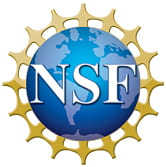A quantum impurity is one particle, or more generally, a discrete quantum system, which interacts with a large ensemble of other particles (or a continuous quantum system). The particles in the bath do not interact with each other (or interact very weakly) so the only relevant interaction is between the bath and the impurity. Quantum impurities are simpler to describe than general quantum many-body systems, where each particle can interact with a large number of other particles. Nevertheless, they exhibit a lot of the fascinating effects that we see in the latter. This makes them fundamentally interesting and also an ideal testing ground for new numerical (and analytical) techniques.
Together with Guy Cohen, Moshe Goldstein, and Hsing-Ta Chen I am studying non-equilibrium properties of the so-called spin-boson model. It consists of a fixed spin (a two-state system) coupled to a bath of non-interacting harmonic modes (bosons). It can be used to model dissipation in quantum systems, but also interactions with photons or phonons, as well as electronic systems via bosonization. We are interested in non-equilibrium and dynamical properties of the spin-boson model, for example how the occupation of the two states changes over time. We can access these properties with numerically exact Quantum Monte Carlo methods, specifically the inchworm algorithm.

The spin-boson model consists of a spin (two-state system) coupled to a bath of non-interacting harmonic modes.)
Our recent work is the first numerically exact study of the quantum phase transition in the sub-Ohmic spin-boson model from intermediate-time dynamics, rather than equilibrium properties. We found that the transient dynamical phase diagram obtained on these time scales differs qualitatively from the known equilibrium one and also discovered two distinct mechanisms for the change from coherent to incoherent dynamics: a smooth damping of the oscillation amplitude, and a sudden drop in the oscillation frequency. We have recently reproduced some of our findings with a different, purely data-driven exponential fitting technique and extended our analysis to include finite temperature properties of the model.
This work is funded by the NSF grant “CAREER: Non-Equilibrium and Time-Dependent Phenomena in Strongly Correlated Fermi Systems”
